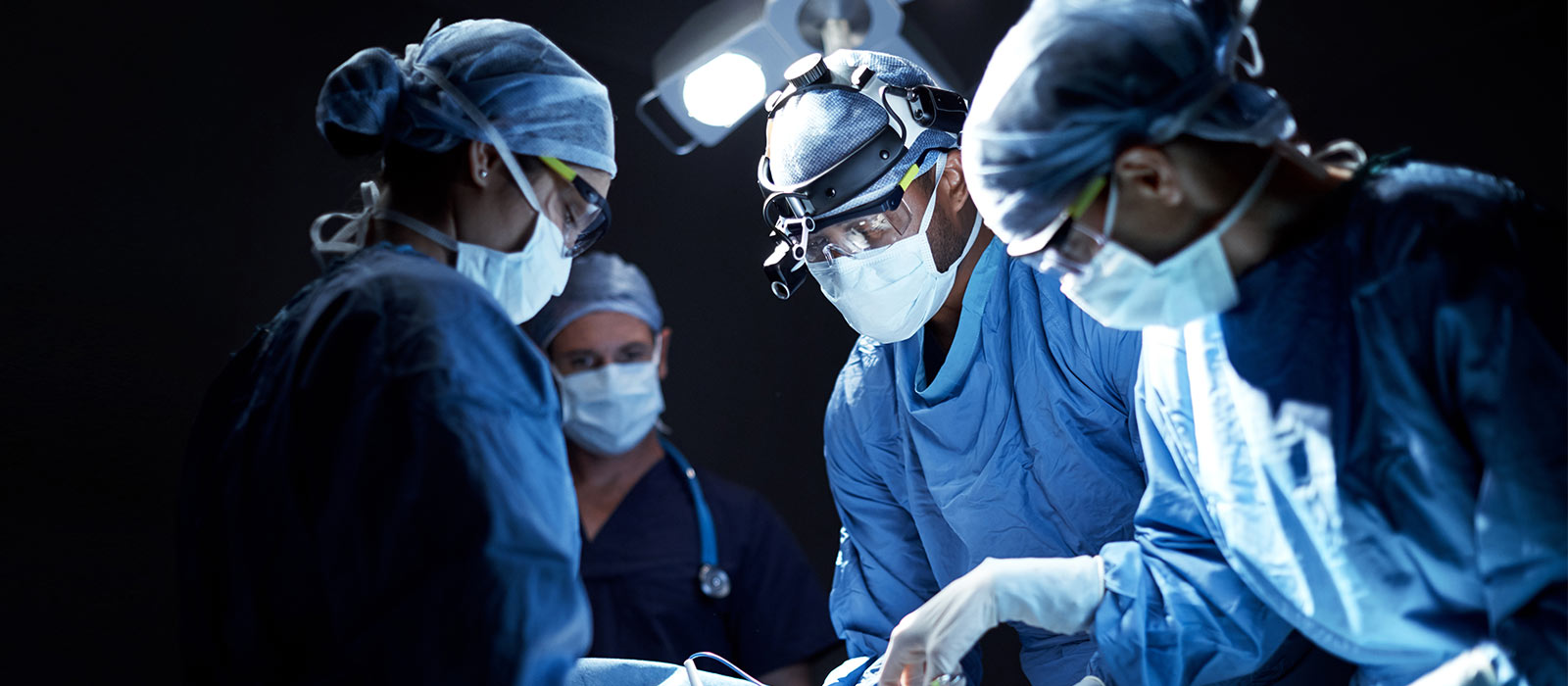Thoracic surgery is a very specialized area of medicine involving operations on the lungs, the lining of the lung (called the pleura), the esophagus, the chest wall and the mediastinum, that few medical institutions in the country offer. Our experience in thoracic surgery is extensive, with our surgeons performing hundreds of surgeries each year.
Most thoracic surgeries performed at Inova use the latest minimally invasive techniques. These techniques require that our surgeons be at the forefront of the newest technologies such as robotic surgery and video-assisted thoracic surgery (VATS).
Thoracic surgery at Inova also includes interventional pulmonologists. Our thoracic surgeons and interventional pulmonologists work closely together, particularly on the diagnosis and treatment of lung cancer in coordination with Inova's Lung Cancer and Thoracic Malignancies Program.
Thoracic surgeons perform operations on the lungs, the lining of the lung (called the pleura), the esophagus, the chest wall and the mediastinum.
Inova’s thoracic surgeons and their focused expertise help make Inova a standout among medical centers both nationally and worldwide. Thoracic surgeons typically complete training in general surgery, then undertake advanced training in cardiothoracic surgery.
Interventional pulmonologists are trained in general medicine, pulmonary medicine and have completed a focused fellowship in advanced minimally invasive techniques involving bronchoscopy and pleural disease.
Interventional pulmonologists diagnose lung conditions to help recommend the best treatment options for your condition and provide invasive and non-invasive treatment therapies.
Our Commitment To Excellence, To Caring
Inova's goal is to provide patients the safest, most effective and efficient treatment possible. In doing so, we want you to have as much information as possible about your thoracic diagnosis and treatment options.
Traditional vs. Minimally Invasive Thoracic Procedures
Inova's comprehensive Thoracic Surgery Program tailors each procedure and surgical approach to the patient's needs, preferences and condition. Our overall philosophy is to offer patients minimally invasive procedures whenever possible, as long as that treatment is the most appropriate choice for the patient's condition. However, we recognize that sometimes a traditional or “open” operation is the better choice to ensure the best possible surgical outcome.
- Minimally invasive techniques offer many benefits including: shorter hospital stays, significantly less post-operative pain, lower complication rates and a faster return to regular activities.
- Traditional thoracic surgical procedures require large incisions, spreading of the ribs, and sometimes removal of one or more ribs to achieve adequate visualization of the organs being treated.
Leading Edge Technology
At Inova we are able to perform a variety of operations using the latest technology, including:
The surgeon makes small incisions of about 2 to 4 centimeters in length. A camera is inserted into one incision and projects the inside of the body onto a high definition flat screen monitor. The surgeon watches the screen while inserting instruments through the additional incisions to perform the surgery.
Similar to VATS, a few small incisions are made in the abdomen in order to get access to the abdomen. The operation is performed through the use of a small video camera and long instruments controlled by the surgeon and his assistant.
Several years ago, the daVinci® robotic-assisted surgical platform was added to our arsenal of advanced surgical instruments. The technology utilizes either the VATS or laparoscopic approaches to enter the body cavities. The surgeon then sits at a computer console that translates his hand movements into precise robotic arm movements, allowing the delicate and precise control of tiny instruments working inside the patient’s body. The surgeon’s vision is enhanced through state-of-the-art, three-dimensional, high definition images on the monitor.
Conditions Treated by Thoracic Surgery
Airways
|
Lungs
|
Treatment Options
Patients who come to Inova benefit from the complete spectrum of minimally invasive and traditional thoracic surgical treatment options available, including:
- Achalasia: laparoscopic or peroral endoscopic myotomy (POEM)
- Difficulty breathing or swallowing: procedures to help open the airway or esophagus
- Esophagectomy: removal of the esophagus with reconstruction
- Gastroesophageal Reflux Disease (GERD) : Laparoscopic fundoplication, LINX and endoscopic fundoplication (TIF procedure)
- Hiatal hernia repairs: where the stomach slides into the chest cavity
- Interstitial lung disease: lung biopsy for evaluation
- Lung cancer: VATS and robotic lobectomy and wedge resection
- Mediastinal tumors: VATS and robotic resection of mediastinal masses
